The ringtail is a little known relative of the raccoon. Although a common resident of southwestern deserts, it is seldom seen due to its nocturnal habits. They are omnivores but are adept at hunting small mammals and birds. They are excellent climbers so look for their dens along cliffs.
On a recent float trip through the Grand Canyon of the Colorado River, I found ringtail sign near virtually every campsite. One night we awoke to see one scamper up a vertical rock face in camp. However, I do not mean to imply that they were a camp pest (the ravens and mice had that role sewn up). My theory is that they are primarily attracted to camps by the concentration of mice.
Here I present tracks, gaits, and scat.
The tracks are about the size of those made by a large house cat, but share some characteristics of raccon tracks.
Tracks in dried mud.
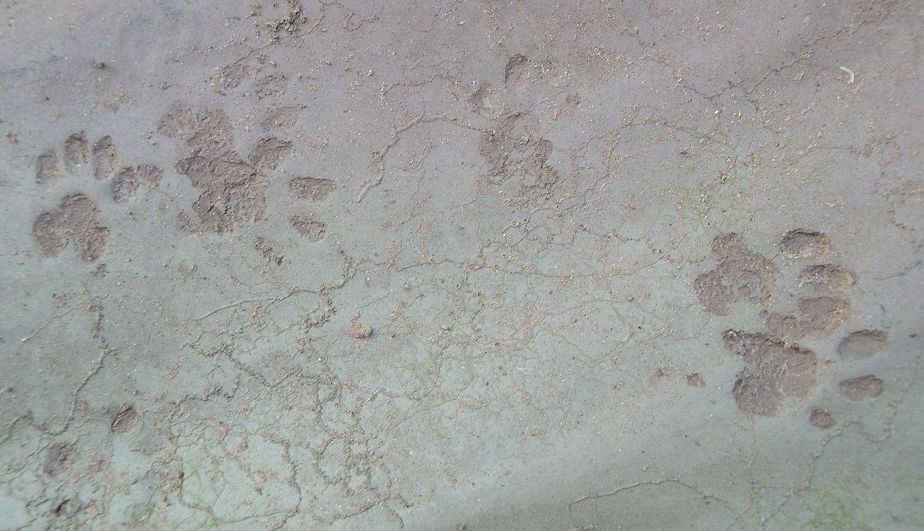
One morning as several in our group were inquiring about the ringtail I reported finding, one canoeist noticed tracks on his wetsuit. There was no question that we had had a visitor in the night. The hind foot has an extra heel pad that is quite unique.
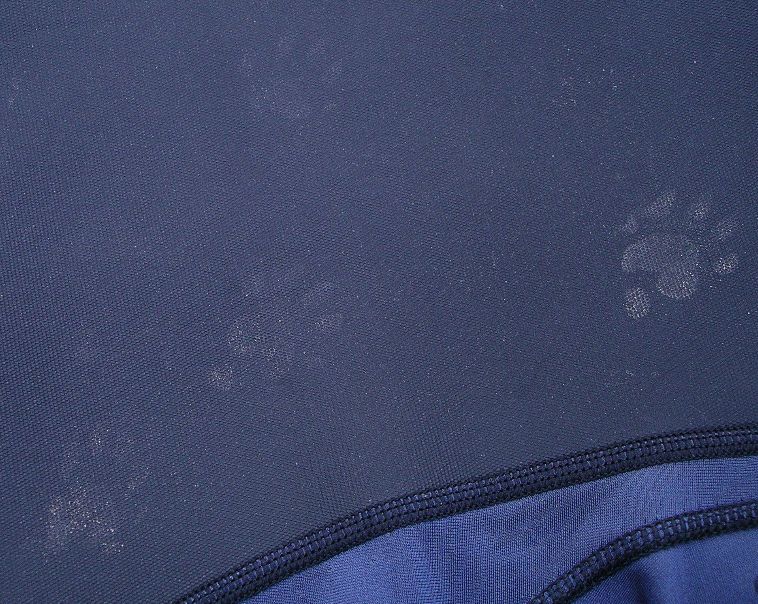
I found ringtail gaits to be highly variable: diagonal walking strides, 4x4 gallops, 3x3 lopes, 2x2 gallops.
Walking gait.
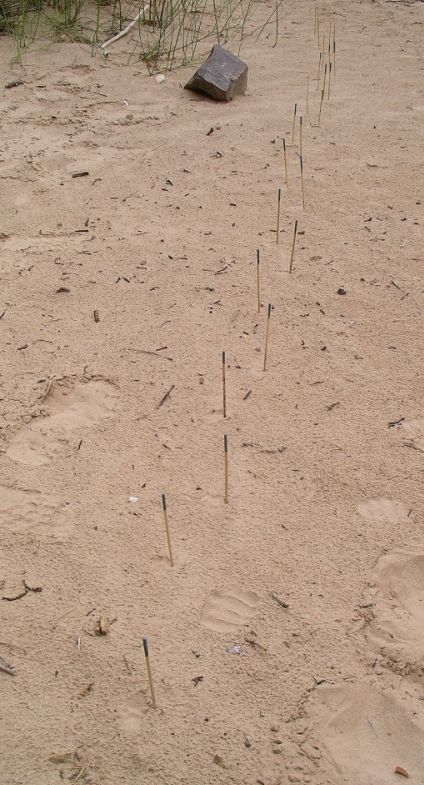

Bounding gait in firm sand.
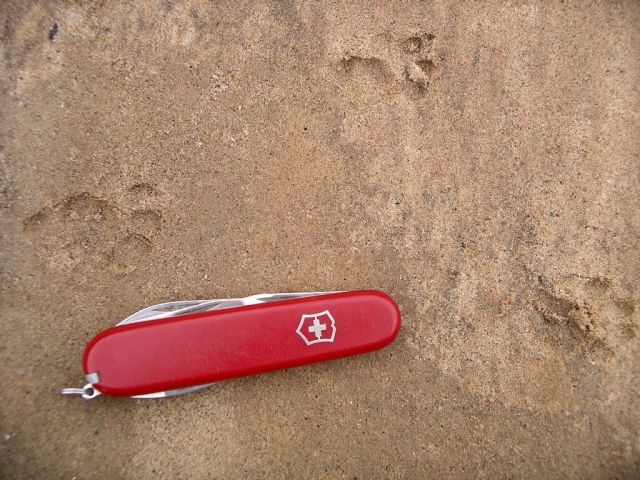
Bounding gait in dry sand.
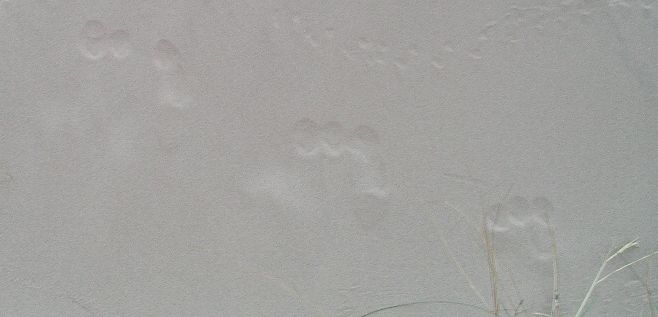
Ringtail scat in Anasazi granary ruins along with desert packrat scat and rodent bones.

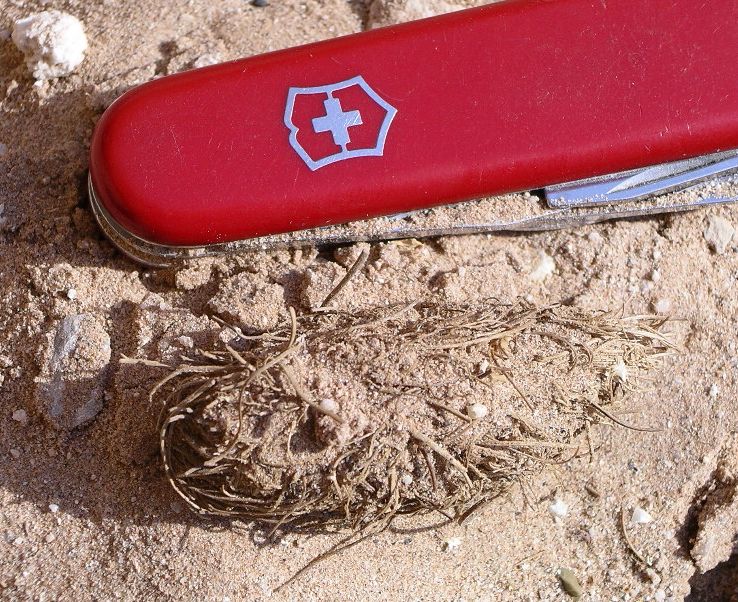
I found this pile of feathers in a remote part of the Grand Canyon. While I cannot be certain this was a ringtail kill, I did not see signs of any raptor and can think of no other likely candidate in this particular location. They will often hunt rodent and small birds. I once observed a ringtail carrying a small bird back to its den.
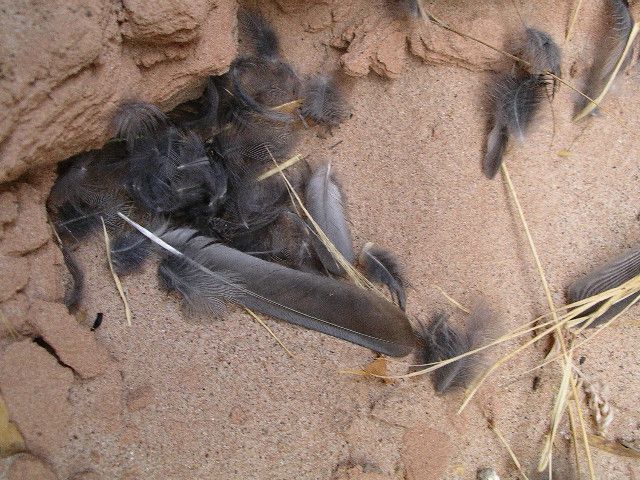 Return to Menu
Return to Menu